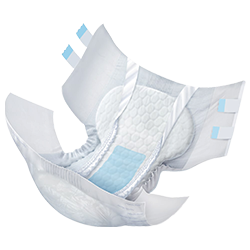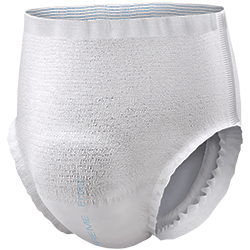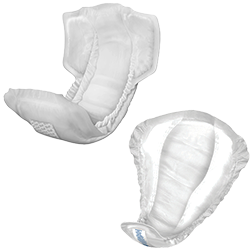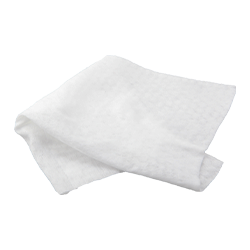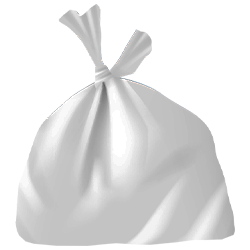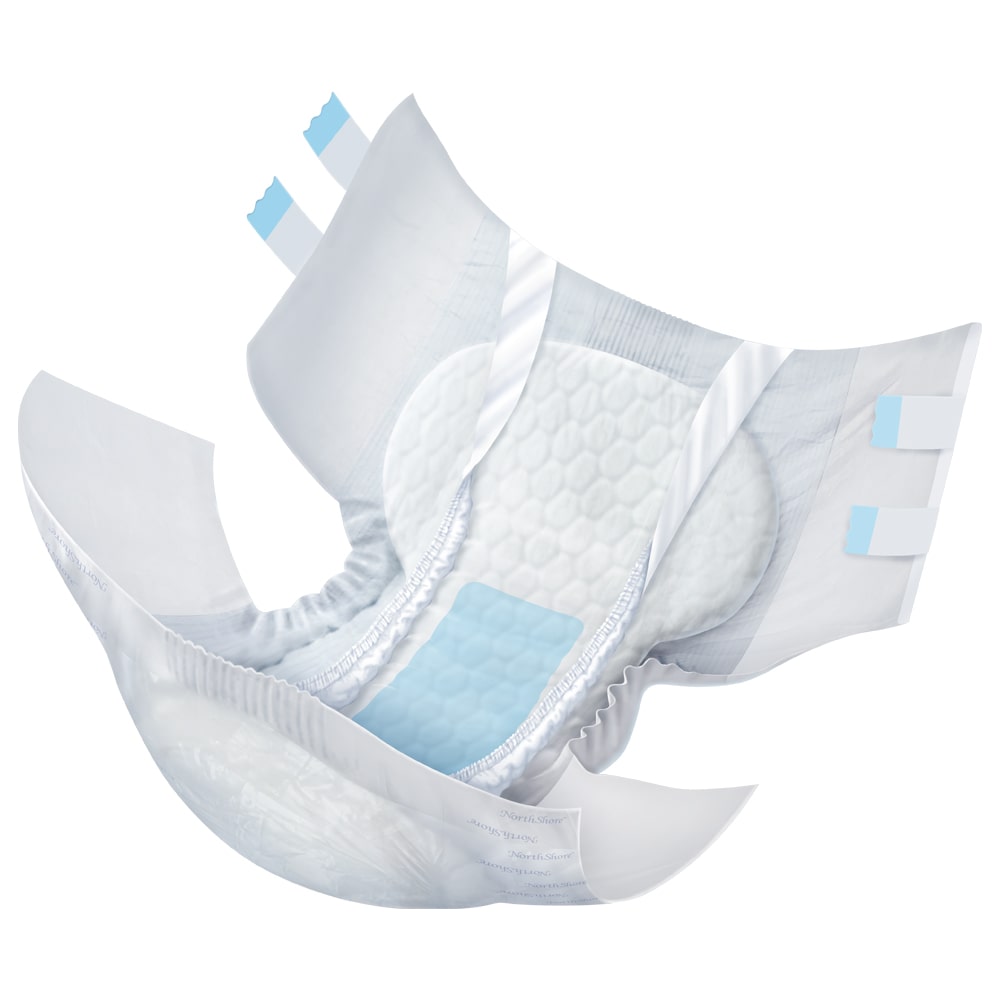What is the Difference Between Heavy and Light Incontinence?

Understanding Light and Heavy Incontinence
Incontinence, the involuntary loss of either urine or stool, is a common and often challenging condition affecting people of all ages. While urinary incontinence is frequently discussed, bowel incontinence is equally prevalent and can significantly impact a person's quality of life. It can be a frustrating topic to discuss, and understanding the various levels of incontinence is crucial for finding effective management solutions.
This article explores the key differences between light and heavy incontinence, empowering you to take back control of your bladder health.
Our customers are prime examples for understanding that there are unique needs, such as David’s story below:
"David, a hardworking construction worker in his late 40s, began experiencing frequent and unpredictable leaks. These accidents not only caused discomfort but also significantly impacted his work and social life. Feeling defeated, David hesitated to seek help. However, after persistent issues, he finally consulted a doctor. Following the diagnosis of heavy incontinence, David discovered NorthShore and came across our product finder tool. The 'Absorbency Guide' helped him understand his needs, and he understood the product style which guided him towards maximum-absorbency adult diapers with tabs. Regaining confidence with the right protection, David starts to feel empowered to manage his incontinence and get back to his active life."
So, let us break things down here on the light and heaviness of incontinence.
Light Incontinence: Occasional Dribbles
Light incontinence is characterized by sporadic leaks, typically triggered by specific movements or physical exertion. The leaked urine amount is generally small, and manageable with pantyliners or light pads. Common causes of light incontinence include:
-
Weak pelvic floor muscles, often due to childbirth or aging.
-
A slight urinary tract infection (UTI).
-
Certain medications with diuretic properties (increase urine production)
-
Activities where downward pressure occurs, such as a sneeze or a cough
Management options for light incontinence may involve:
-
Pelvic floor exercises (Kegels): Strengthening these muscles can improve bladder control.
-
Bladder training: Techniques to retrain the bladder to hold urine for longer intervals.
-
Lifestyle modifications: Reducing caffeine and acidic beverages that can irritate the bladder.
While NorthShore specializes in providing incontinence protection for heavier incontinence situations, light incontinence users use our “Lite” products for overnight or even a heavier liner.
Heavy Incontinence: Significant Disruption
Heavy incontinence, whether urinary or fecal, presents a significant challenge. Leaks can happen frequently, even during rest, and the volume of fluid or stool lost can be substantial, soaking through protective garments and causing disruptions to daily life. This can lead to feelings of embarrassment, isolation, and reduced quality of life.
Some potential causes of heavy incontinence include:
-
Underlying medical conditions like diabetes or neurological disorders
-
Severe pelvic floor muscle weakness
-
Previous surgeries affecting the bladder or urethra
Management options for heavy incontinence may include:
-
Consulting a healthcare professional: A doctor can diagnose the underlying cause and recommend appropriate treatment options, which may include medication or medical devices.
-
Pelvic floor exercises: Kegels strengthen the muscles that support the bladder. Strong pelvic floor muscles can go a long way toward warding off incontinence.
-
Lifestyle modifications: Reducing caffeine and acidic beverages that can irritate the bladder.
Okay, that was a brief breakdown of the light and heaviness of incontinence. Now, let's review...
Levels of Incontinence
Incontinence can be categorized in different ways such as frequency, volume, and triggers. Here are a few breakdowns:
Urinary Incontinence:
-
Light Incontinence: Occasional leaks, often triggered by physical activities like coughing, laughing, or sneezing. The amount of urine leaked is minimal and manageable with liners or light absorbency pads.
-
Moderate Incontinence: Leaks occur more frequently, sometimes without a clear trigger. The volume of leakage may be moderate, requiring pads with higher absorbency.
-
Heavy Incontinence: Frequent or constant leaks, often exceeding the capacity of incontinence pads and significantly impacting daily activities.
Bowel Incontinence:
-
Occasional Incontinence: Infrequent bowel accidents, often manageable with diet or lifestyle changes.
-
Frequent Incontinence: Regular bowel accidents, requiring more intensive management strategies.
-
Severe Incontinence: Constant leakage or loss of bowel control, often associated with underlying medical conditions.
Finding the right solution for incontinence is most important. NorthShore put together a few questions and created a Product Finder tool to provide product recommendations for different situations. Below is a sneak peek of the "Help Me Choose" guides provided.
Understanding an absorbency level can provide knowledge on whether a lighter or heavier product is needed, below is the "Help Me Choose" for Absorbency.
Absorbency Guide
All-Night, Multiple Voids
Heavy flow leaks or floods with protection needed for over 6 hours for day and/or night.
Urge, One Heavy Void
Heavy leaks often without warning triggered by standing up in the morning or other factors. Ability to change absorbent products after each event.
Intermittent, Moderate
Inconsistent, moderate to heavy leaks often require protection for 1 to 3 events.
Light, Drips, Cough/Sneeze
Leaks are mostly limited to smaller amounts of a few drops to a few ounces at a time.
Once an absorbency level is determined we can take a look at selecting a preferred style. Don’t worry, we’ll show matching results for all styles, but let's take a closer look at the "Help Me Choose" for Product Style.
Product Style Guide
Diaper-Style with Tabs (Briefs)
Adjustable tabs and tall leak guards provide a comfortable fit that is secure around the waist and leg openings to help prevent leaks. Highly absorbent briefs offer a waterproof backing in plastic (poly) or soft cloth-like material. Easier to change for people who have difficulty standing or for caregivers and is highly recommended for side sleepers.
Pull-Up Style Underwear
Often referred to as disposable or protective underwear, pull-ons feature an absorbent lining with elastic around the legs to contain leaks. Soft, comfortable elastic waistbands make it easier to pull up and down like regular underwear without fully removing them.
Pads, Liners & Guards (for use in regular underwear)
Discreet products, worn inside regular underwear, offer protection and absorbency. Pads and panty liners are ideal for light to moderate bladder leaks; male guards are designed for men and boys with light to moderate leaks; and liners are larger and offer heavier protection for urinary and bowel incontinence. Note: They should NOT be worn inside another disposable product.
Understanding the different product types is essential for providing the best protection and comfort.
We hope this article provides insights into the differences between light and heavy incontinence to further guide you in finding the right solutions for your situation.
As we heard from David’s story above, he had hesitation to seek advice from his doctor. If you experience persistent incontinence that disrupts your daily activities, consult a healthcare professional. Early diagnosis and treatment can significantly improve your quality of life.
Conclusion
Incontinence, whether urinary or fecal, can significantly impact a person's quality of life. By understanding the different levels of incontinence and seeking appropriate medical advice, individuals can regain control and confidence. With a combination of medical treatments, lifestyle modifications, and specialized products, it's possible to manage incontinence effectively. Remember, you're not alone, and there are resources available to support you.
Our Product Finder is an extremely helpful tool, and our Customer Care team is a phone call, email, or chat away. Don’t have time now? No problem, see below for our quick form so we can work together, provide a few details and we will reach out to you directly.
|
|
Thank you so much for reading our blogs! NorthShore is here for you on this journey and our Customer Care experts are always happy to help each person find the best product for their situation. Find out how, provide a few details below and a Customer Care expert will reach out. |
*Regardless of capacity, an absorbent product must be changed immediately following a bowel movement.
